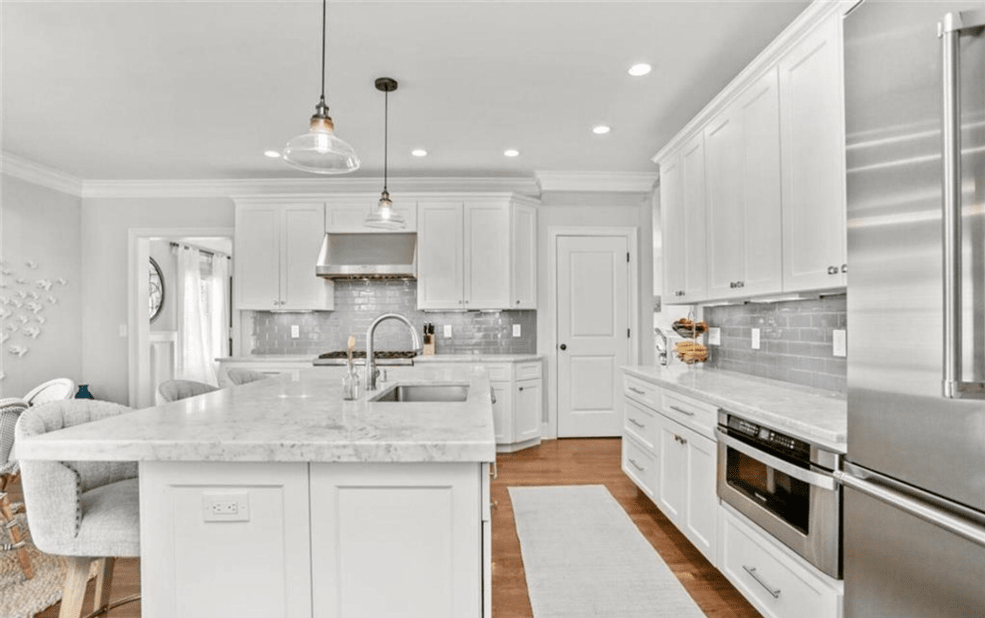In a marketplace still emerging from a once-in-a-lifetime sellers' market, listing a home comes with plenty of uncertainty. Not that you won't sell — amid such low inventory, any home listing in Fairfield is akin to finding a fifth golden ticket. But in a slowly balancing market, selling requires more planning, patience, and effort.
Let's explore the primary steps and general dos and don'ts involved with listing and marketing your area residence with Fowler Sakey & Team's ultimate guide to selling your home in Fairfield.
Seek out an experienced listing agent
An experienced, knowledgeable agent is critical to guiding you throughout the sales process. They are also an excellent sounding board and a knowledgeable trove of information. They're there to support you every step of the way, ensuring you not only sell but successfully begin the next chapter in your life.
It's also worth noting that selling in Connecticut (as well as throughout much of the Northeast) requires a real estate attorney, specifically for the closing stages. You can seek out an attorney on your own, as you can any other service provider, or consider a recommendation from your real estate agent.
Order a pre-listing inspection and prep your home
Increasingly common for sellers, ordering an inspection for your Fairfield home before listing gives you an early advantage in the sales process. When you know the complications, you can mitigate those concerns before listing, disclose them after your house hits the market, or wait to negotiate any repairs after a buyer conducts their inspection. It keeps your timeline for selling intact and you pressing ahead toward a sale.
With the inspection report, it's time to prepare your property for its market debut.
First, make it a point to address any minor repairs. You don't want small-scale maintenance issues complicating your sale.
For any significant problems, such as roof or siding damage or major mechanical concerns, weigh the cost of repairs against what you stand to gain or lose from the final sale. There's no need to address a large-scale repair if it puts you in a financial bind. You can always disclose or negotiate over the matter post-buyer inspection.
Regarding updates within the home, discuss with your agent what makes the most sense. Your primary goal is to get the house physically ready to sell. Especially for older homes, a few
low-stakes improvements go a long way to impressing a buyer.
Cleaning and staging
The final stages of physical home prep include cleaning, decluttering and staging.
Your primary goal is the illusion that no one currently occupies the property. You want to create an environment where would-be buyers can envision themselves. Spaces they can work or their children can study or play — a residence where they can entertain their family and friends.
A clean, well-staged home can bring about an "act now or lose it forever" urgency within smitten buyers, even enticing same-day offers.
Establish an informed list price
Setting your list price is a bit of a paradox — price it too low, and you leave money on the table; price it too high, and you risk scaring off buyers. You'll lose either way if you don't get it right the first time.
While that's an extreme viewpoint, the freewheeling pandemic-era market saw many sellers lose sight of the nuances of setting competitive yet practical list prices. That is understandable since that market rendered those nuances moot.
While market demand and current inventory play critical roles in price setting, so do other factors such as affordability, desirability, functionality, and, as always, location. Be realistic about what your home can offer and what it cannot.
The ultimate goal is not necessarily selling your home at the price you set. Instead, you want the price to attract plenty of interest from motivated buyers. The more offers your price generates, the greater the chance the final number is higher than where you started.
Reviewing and accepting offers
From the point you receive an offer to the final stages of closing the sale, the process can take between 45 and 60 days. Of course, a simple cash transaction can shorten that window, while a more complex acquisition can lengthen it. Exercise patience during this phase, as you're not an active participant for most of it.
You are, however, the central figure in bridging your listing with a potential buyer. As your listing agent receives offers, make it a point to review each one. Get feedback from your agent on those offers deemed the most viable while also considering the following:
- Is the offer financed or all-cash
- For the all-cash offer, what is the source of the funds
- For financed offers, the down payment, type of financing, if it's pre-approved (as opposed to the less binding pre-qualified), the proposed closing date, and if it comes with contingencies determine the strength of the offer
Each of the above can spawn numerous scenarios, and impact the time and effort it takes to close the sale, so carefully weigh each factor. The highest offer you receive is not always the obvious one to take. The goal is to accept or negotiate the bid that aligns closest to your asking price, with strong financial backing and a reasonable closing date.
If you're ready to buy or sell a home in Fairfield County, contact Fowler Sakey & Team today and allow our years of experience and expertise to provide you with a better real estate experience.

